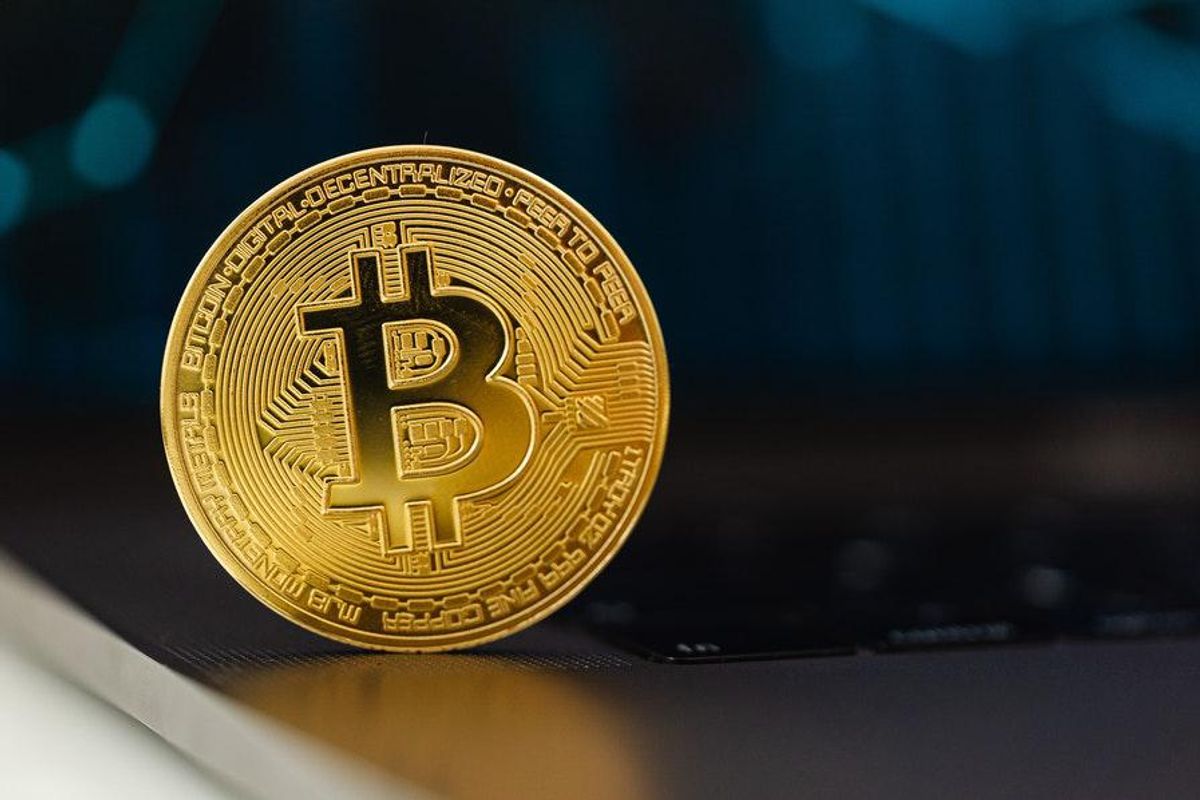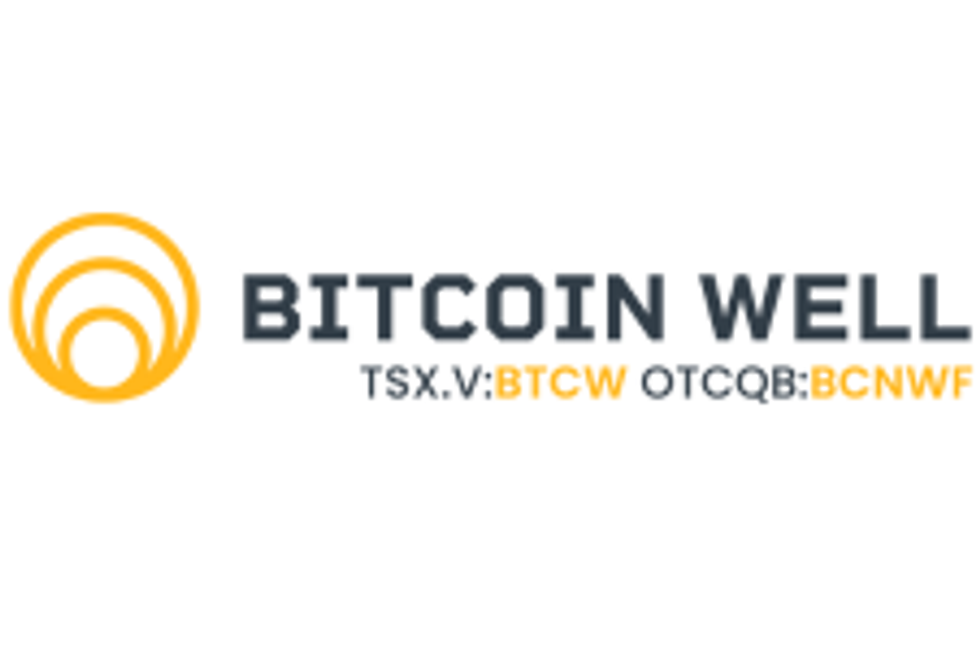Crypto Crash: Is Crypto a Bad Investment?
With a crypto winter setting in, are digital assets still the new gold? Or are they a risky mistake?

After a meteoric rise, it’s been a punishing year for cryptocurrencies as 2022 proves to be more than just a bear market for digital assets. Does this crash mean crypto is a bad investment?
Protection from economic uncertainty, high inflation and the ability to store value — these are the features that have attracted investors to hard assets like gold for generations.
In recent years, younger investors have ascribed these same features to cryptocurrencies. In fact, bitcoin’s outperformance of gold in 2020 sparked some market analysts to call the cryptocurrency the new gold.
But the latest price slide in 2022's high-inflation environment has reminded investors that cryptocurrencies — despite their easy portability, decentralization and fungibility — are volatile rather than protective assets.
After soaring to US$68,649.05 in November 2021, the price of bitcoin crashed by more than 70 percent to the US$19,000 level in June 2022. Although bitcoin prices had rebounded slightly to over US$23,000 as of late July, Trading Economics analysts are projecting that prices will fall further over the next 12 months to under US$15,000.
Here the Investing News Network takes a deeper dive into the crypto market, including what’s behind this year’s crash, the pros and cons of crypto and options for investors looking for safer alternatives.
How did cryptocurrencies become popular?
The birth of bitcoin in 2009 ushered in a new era of peer-to-peer electronic payment systems, or cryptocurrencies.
Under the pseudonym Satoshi Nakamoto, bitcoin's shadowy creator sought to counteract growing mistrust in the traditional banking system and government-issued currencies following the 2008 financial crisis.
Cryptocurrencies are secured through the use of cryptography to offer transparent transactions, as well as protection from counterfeiting and theft. Unlike traditional forms of currency such as paper bill and coins, these digital assets aren’t printed or minted at central banks. Cryptocurrencies are "mined" using computers with blockchain-technology-based software programs. Today, there are thousands of cryptocurrency options, with some of the most popular being bitcoin, bitcoin cash, ethereum, dashcoin, litecoin and ripple.
To complement these crypto options, there are also numerous cryptocurrency exchanges and peer-to-peer crypto trading apps, such as Binance, Coinbase (NASDAQ:COIN), CoinSmart Financial (NEO:SMRT), Gemini and Kraken.
In the decade since its inception, the once-cryptic cryptocurrency has gone mainstream, spurred on by new access points for investors. In 2020 and 2021, several crypto investment tools were made available to both institutional and retail investors, including crypto trusts and crypto exchange-traded funds (ETFs).
Even though the crypto market is maturing, it is still plagued by volatility, as evidenced by the huge hikes and deep dives in crypto prices. Take bitcoin for example: 2016 is considered a pivotal year, as the price for the digital currency rose 121 percent from US$433 at the start of the year to US$959 at the close.
Bitcoin’s success attracted attention from mainstream financial media outlets, and in 2017 that coverage helped fuel an astonishing 1,729 percent jump in the crypto coin’s value, from US$1,035.24 in January to US$18,940.57 in December. However, bitcoin couldn’t hold on to these gains, falling to US$11,837.70 by the end of 2018.

Bitcoin price history.
Chart via Trading Economics.
Throughout 2020 and 2021, bitcoin benefited from surplus cash and investor interest in alternative assets, rising more than 1,200 percent. Tesla (NASDAQ:TSLA) CEO Elon Musk’s purchase of US$1.5 billion worth of bitcoin in February 2021 and announcement that his company would accept digital assets as payment for its electric vehicles lent significant credibility to the crypto market, further driving demand.
Bitcoin’s rising prominence as an investment vehicle led investment bank Citigroup (NYSE:C) to predict that it could become the currency of global trade, calling the cryptocurrency the “new gold.”
What's causing the current "crypto winter"?
Citigroup’s forecast that bitcoin could reach US$300,000 by December 2021 ultimately proved to be no more than wishful thinking. The year 2022 has clearly shown that there are two sides to bitcoin, and right now the cryptocurrency market’s dangerous volatility is in clear view.
Since its all-time high of US$68,649.05 in November 2021, the digital currency has plunged in 2022 as investors exit riskier assets in the face of worldwide inflation and increasing economic uncertainty.
Even Tesla has recently moved to shorten its position in cryptocurrency. In its Q2 earnings statement, the company reported, “As of the end of Q2, we have converted approximately 75% of our Bitcoin purchases into fiat currency.”
Greg Taylor, chief investment officer at Purpose Investments, told INN, “It certainly is not acting as much of a risk diversifier as some had thought when they called it digital gold — it's acting more like a risk-on asset.”
It seems the market may be in the middle of a “crypto winter,” a phrase born out of the Game of Thrones warning “winter is coming.” Much like Westeros, the crypto landscape is under threat of sweeping chaos.
“The crypto market was already feeling the effect of world events, especially the Russia-Ukraine conflict that caused turmoil in global finance,” noted Igor Zakharov, CEO of DBX Digital Ecosystem, as reported by Forbes. He also pointed to rising inflation and interest rates as a critical force in crushing the crypto market.
Bitcoin isn't the only digital asset frozen out by the encroaching crypto winter. “By the time TerraUSD and Luna collapsed and set in motion a domino effect in the crypto world, crypto winter had already begun,” Zakharov said. Other cryptocurrencies, such as ethereum and litecoin, have also dropped sharply.
Another factor in why crypto is down is that digital assets tend to trade on sentiment, which can be highly susceptible to herd mentality. Rising prices elicit a FOMO response and investors begin piling in, further driving up prices. However, the opposite also holds true. Significant price drops can spark a selling frenzy as investors smell blood in the water, and downturns can deepen rather quickly.
"That's when it gets scary for people because, if enough people head for the exit, there's no floor. There's nothing to stop it trading at $10,000 tomorrow, if enough people give up or are forced to sell," Financial Times markets editor Katie Martin told the BBC in a recent interview.
However, those with more of a long-term investment approach see this latest fall of in crypto prices as just another valley before an eventual peak, and are carefully timing their entries.
Gareth Soloway of InTheMoneyStocks.com may be among the crypto bears for the short term, but he runs with the crypto bulls when it comes to the market’s longer-term outlook. In a June 2022 interview with INN, Soloway said US$100,000, US$500,000 or even US$1 million bitcoin could be in the cards in five to 10 years.
"I'm a huge bull on it, I just wasn't going to pay up at US$65,000 when all my charts and all my probabilities were telling me it was going to go to US$20,000 or sub-US$20,000," he said.
Legality, theft and more — reasons for crypto caution
Investors should note that crypto volatility isn’t the only reason to take caution with this high-risk, high-reward asset. For one, crypto cash is still not considered legal tender — money with government approval that can be used as payment for debt — hence it is not insurable, and investors are left with little recourse if it's stolen.
Perhaps unsurprisingly, cryptocurrency theft is a big business. The most recent high-profile cases include US$625 million stolen by North Korean hackers from Ronin Network, an ethereum-compatible blockchain built for play-to-earn game Axie Infinity, and US$320 million heisted from Wormhole, a communication bridge between Solana and other decentralized-finance blockchain networks.
These cryptocurrency vulnerabilities also stem from the fact that the market remains highly unregulated and open to fraudulent scams — a bit ironic given that the original purpose of the technology was to create a monetary system not handcuffed by the highly regulated traditional banking institutions.
“Since the start of 2021, more than 46,000 people have reported losing over $1 billion in crypto to scams — that’s about one out of every four dollars reported lost, more than any other payment method,” notes a June 2022 US Federal Trade Commission (FTC) report. The FTC pegs the median individual reported loss at US$2,600. Bitcoin (70 percent), tether (10 percent) and ether (9 percent) were among the top currencies victims used to pay scammers.
Are gold and silver safer investments than crypto?
For investors who don’t want to get left out in the cold of a crypto winter, lower-risk assets might be a safer bet.
“More stable, lower-yielding safe investments help protect your cash — and may even provide modest growth in difficult times,” according to Forbes editor Benjamin Curry and contributor Miranda Marquit.
In a recent article, the pair offer up a number of “safe investments” for 2022, including US treasury bonds, preferred stocks paying high dividends and, notably, gold.
Physical gold has a long history as a safe-haven investment, and may offer a less volatile alternative to new age tech investments like cryptocurrencies. Unlike cryptocurrencies, gold bullion bars and coins are considered legal tender, and the precious metal can be securely stored in an insured bank depository or safe deposit box.
Check out the articles below for more on physical gold and gold's place in a portfolio:
There is plenty of bullish sentiment to go around for both gold and its cousin silver. "To me, the value in the precious metals and the overall precious metals thesis is just so strong it's overwhelming," Brian Leni, founder of Junior Stock Review, told INN at the Prospectors & Developers Association of Canada (PDAC) convention.
Peter Krauth, editor of Silver Stock Investor and author of the book "The Great Silver Bull," also spoke to INN at PDAC. He believes the current financial environment is an ideal time to include non-traditional elements like silver in one’s investment portfolio. "I really think the solution is to start looking at alternative assets," he said.
Like many in the silver sector, Krauth has a long-term price target in the triple digits, with his being US$300 per ounce. Check out the article below for more on physical silver:
Speaking of prices, although gold is below its record level of US$2,074.60 per ounce, which it reached in March 2022, many market participants believe it's holding up well compared to other investments. "When I look at the numbers, I want to remind precious metals investors that gold, even though it's not always in the green, is actually doing a lot better than some of its peers," said Mark Yaxley, managing director at precious metals dealer SWP.
"(Precious metals) always come through … they provide the security and stability that they're designed to," he said. "And so be patient and let them do their work — I think you'll be happy with your decision at the end of the day."
Besides purchasing and holding physical gold and silver, other options for gaining exposure to precious metals include gold futures and silver futures, as well as gold ETFs and silver ETFs. Futures contracts allow investors to trade precious metals without having to pay the full amount or take possession right away. There are two main types of precious metals ETFs: those that track price changes and those that track stocks.
While much more of a high-risk, high-reward investment than physical gold and silver, dividend-paying precious metals stocks offer yet another opportunity for investors to diversify their portfolio. INN’s articles 5 Silver Stocks that Pay Dividends and Dividend-paying Gold-mining Stocks are a good place to start.
For a closer look at this year’s top-performing gold and silver stocks, check out INN's articles Top 5 Gold Stocks on the TSX, Top 5 Gold Stocks on the TSXV, Top 5 Silver Stocks on the TSX and Top 5 Silver Stocks on the TSXV.
Securities Disclosure: I, Melissa Pistilli, hold no direct investment interest in any company mentioned in this article.
Editorial Disclosure: CoinSmart Financial is a client of the Investing News Network. This article is not paid-for content.
The Investing News Network does not guarantee the accuracy or thoroughness of the information reported in the interviews it conducts. The opinions expressed in these interviews do not reflect the opinions of the Investing News Network and do not constitute investment advice. All readers are encouraged to perform their own due diligence.
- Cryptocurrency Mining Stocks: 6 Biggest Companies in 2022 ›
- How Can Investors Navigate Crypto Volatility? ›
- Bitcoin: A Brief Price History of the First Cryptocurrency ›
- What is Crypto? ›
- Investing in Cryptocurrency ETFs | INN ›
- After Ethereum Merge, What’s Next for Bitcoin? ›
- Ethereum Merge Countdown: What Should Investors Know? ›
- Ethereum Merge Countdown: What Should Investors Know? ›
- How will the FTX Crash Affect Crypto Regulations? ›





